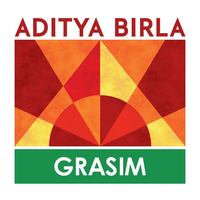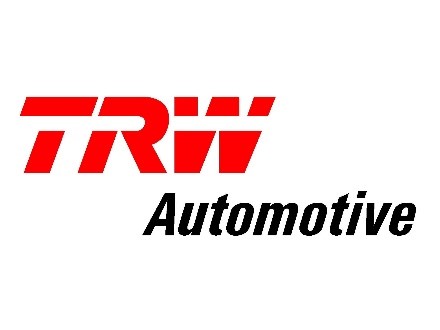CCI fines Grasim for exploitative abuse of its dominant position in the market for supply of VSF to spinners in India

By way of order dated 16.03.2020, the Competition Commission of India (“CCI/Commission”) has imposed a fine of INR 301.6 Crores on Grasim Industries Ltd (“Grasim”) for abusing its dominant position in the market for supply of Viscose Staple Fibre (“VSF”) to spinners in India by resorting to exploitative conduct such as (i) discriminatory pricing and non-transparent and discriminatory discount policy within domestic customers and also between domestic and international customers , and (ii) imposing supplementary obligations as condition precedent to conclusion of contracts for supply of VSF to its customers such as seeking production details and poof of export from the spinners and for .
Background and Allegations
VSF is used as an input in spinning industry to produce yarn which is then converted into fabric and various types of apparels. The information before the CCI was filed against (i) Association of Man Made Fibre Industry of India; (ii) Grasim; (iii) Thai Rayon and (iv) Indo Bharat Rayon. The information alleged that Grasim being the sole producer of VSF in India has abused its market power in India with the aid of Thai Rayon (operating from Thailand) and Indo Bharat Rayon (operating from Indonesia). It was alleged that Grasim was charging dissimilar prices from different customers in the domestic market and the same practice was being followed between domestic customers and foreign customers. As per the information, Grasim was selling VSF at lower rates to its international customers and the same product was sold at a much higher price to domestic customers. The informant alleged that Grasim had segmented the domestic customers into separate categories: (i) domestic customers who manufacture and supply yarn for the domestic market; and (ii) domestic customers who manufacture and yarn for export(deemed exporters). It was further alleged that Grasim forces its domestic customers to submit their monthly yarn production data for calculating the discount rate applicable to them and follows a non-transparent practice while invoicing and refuses to disclose its discount policies to its customers.
Further, as per the informant, while Grasim was instrumental in getting anti-duping duties imposed on import of VSF products from China, it was itself importing VSF products from its group companies such as Thai Rayon and Indo Bharat Rayon located in Thailand and Indonesia respectively, without paying any such anti- dumping duties. It was also alleged that import of VSF form Thailand by Grasim has increased substantially after the imposition of anti-dumping duties on imports from China. It was also alleged that since OP-2 sells its excess production of VSF in the international markets at price much lower that the domestic market, the cost of raw materials for the local manufactures becomes higher than their foreign counterparts. As a result, local manufacturers are unable are unable to compete in the international markets.
The Commission, after considering the material on record, found that prima facie case exists and vide order dated 10.11.2016 under Section 26(1) of the Act directed the Director General (DG) to cause an investigation to be made into the matter and submit a report. The DG submitted investigation report on 27.03.2018 (“investigation report”).
Investigation by the Director General
Relevant Market and Dominance
The Director General (“DG”) observed that VSF is a man-made biodegradable fibre and fabrics made from it are moisture absorbent, breathable, easily dye-able in vivid colors, pill resistant etc. The DG after analyzing the characteristics, price, use and consumer preference concluded that VSF, Polyester Staple Fibre (“PSF”) and cotton are different products for the consumer and are not substitutable with each other. To analyze the consumer preferences, the DG examined well known retail chains like BIBA, Shoppers Stop, Fab India etc. by treating them as representing large number of customers. The DG examined senior executives of these retail chains to depose in the matter. It was noted by the DG that the apparel retailers keep in mind the distinct qualities of different fibers while souring the fabrics. It was emphasized by the retailers that one fiber cannot be substituted with another on cost or other such comparison. Thus, the DG found that the distinct demand from end consumers creates a pull which reaches the spinners through the supply chain. Therefore, for the purpose of analysis in the present case, the DG considered spinners as a reasonable proxy for the end consumer. From the statements of the spinners and their subsequent cross-examination by OP-2, the DG noted that cotton and PSF are not substitutes of VSF in the specific context of competition assessment and that there exists a distinct preference for VSF from the end consumers’ perspective leading to VSF demand by the spinner. Accordingly, the DG delineated the relevant product market as “the market for supply of Viscose Stable Fiber (VSF) to spinners”. With respect to the assessment of relevant geographic market, the DG opined that the relevant geographic market would be ‘whole of the geographical area of India’. Based on this, the DG noted the relevant market as ‘the market for supply of Viscose Stable Fiber (VSF) to spinners in India’.
Regarding the market position of Grasim, the DG concluded that Grasim was dominant in the relevant market due to its high market share of more than 85%, its large resources and ability to dictate conditions on buyers before selling its products.
Abuse of Dominance
The DG observed that there was rampant discrimination amongst the customers of the same segment who were buying the same product for the same month in nearly the same quantity without any justifiable explanation. The DG further observed that different spinners were eligible for different schemes (based on the price of VSF invoice) and, therefore, the discount applicable to different spinners varied. The DG also found that Grasim was discriminating in pricing of VSF between different categories of buyers i.e. amongst domestic buyers, amongst deemed exporters and amongst foreign buyers.
The DG further observed that Grasim was also discriminating against those spinners who were not converting VSF purchased from it into yarn as per its policy by forcing spinners to submit their monthly production data before claiming the required discounts and spinners were forced to submit the details of products produced and not just VSF consumed. As per the DG, seeking production details and proof of export amounted to imposing supplementary obligations on sale of VSF which had no connection with the subject of the contract.
The DG, accordingly, concluded that Grasim was in contravention of Section 4(2)(a)(ii) and Section 4(2)(d) of the Competition Act, 2002 (“the Act”).
Grasim’s objections to the investigation report
Relevant Market
Grasim contended that the DG has incorrectly defined the relevant market by purely relying on physical characteristics and chemical properties of polyester, VSF and other fibres and therefore excluded all other kinds of man made fibres as well as cotton which has similar characteristics, end use and easy demand substitutability. It was also submitted that the DG has ignored that two or more fibres can be blended in the production of yarn and fabrics and the change in the proportion of blends itself is an evidence of substitutability of one fibre with another. Further, it was contended that the prices of VSF, cotton and polyester are closely related. Grasim urged that the relevant market is the market of Man Made Fibres and Cotton used in spinning for the production of blended yarns, textiles and apparel in India’.
Grasim argued that DG incorrectly referred to Anti-Dumping Duty (ADD) imposed on import of VSF from China and Indonesia by the Government of India in determining its alleged dominance. Grasim also submitted that it does not control any spinners in India and is not vertically integrated in the upstream or downstream market. It was further submitted that the spinners have the choice to determine the blend for their product and can opt for any blend or any fibre and there was enough countervailing power to negotiate and to substantially affect the demand for one fibre by shifting to other fibre.
Grasim also contended the finding of the DG with respect to the barriers of entry. It was urged that the technology used in the manufacture of VSF is not patented and is well known, therefore, there no restrictions with respect to intellectual property rights. Further, Grasim submitted that 100% FDI is permitted to undertake VSF manufacturing without seeking any government approval. Grasim also stressed about the competitive constraints faced by it from other suppliers of Man-made Fibre, cotton, domestic as well as international suppliers of VSF and credible potential entrants.
Grasim attempted to justify the price discrimination on account of cogent business reasons and on account of factors such as type of VSF, location of plant, denier, grade, dyeing charges of dyed VSF etc. Grasim also stressed that DG could neither produce any evidence showing that equivalent transactions had been treated differently nor that its conduct was causing any harm to competition in the relevant market. Moreover, it was submitted that Grasim was not vertically integrated and is not in competition with its customers i.e. spinners and any foreclosure of competition in the downstream market of the spinners would be disadvantageous for Grasim itself.
Grasim had also applied for cross examination of ten individuals, out of which Grasim was allowed to cross examine six witnesses all spinners .In the cross-examination report, the DG concluded that 5 out of 6 spinners maintained their earlier stand that VSF was not substitutable with other fibres. However, Grasim contended that DG did not allow it to cross examine four remaining witnesses whose statements were also recorded on oath by DG during investigation.
CCI Analysis
The Commission at the outset noted that the DG had confined its investigation to only Grasim as there was no specific allegation against Association of Man Made Fibre Industry of India, Thai Rayon and Indo Bharat Rayon, and accordingly, confined its analysis only with respect to Grasim.
A noteworthy preliminary objection raised by Grasim was that the cross examination can only be held by ‘further enquiry’ and not in the form of an investigation by the DG. It was submitted that any action pursuant to the circulation of the DG Report to the parties which finds contravention of the Act can only be done by way of “further inquiry” by the Commission, and not by way of further investigation by the DG.
The Commission rejecting Grasim’s contention observed that the cross-examination application was filed by Grasim under Regulation 41 (5) of the Competition Commission of India (General) Regulations, 2009 which enables the Commission or the DG to grant opportunity of cross-examination to the concerned parties. Further, the Commission noted that a plain reading of Section 41 of the Act reveals that the DG shall, as and when so required, assist the Commission in investigating into any contravention of the provisions of the Act or any Rules or Regulations. Concluding, the Commission held that investigation is a subset of wider and overarching inquiry launched by the Commission and during the inquiry process, the Commission is fully empowered to take the assistance of the DG in the manner required by it.
Relevant Market
The CCI observed that the textile fibres can be classified into two broad categories based on the source from which they are obtained: (i) natural fibers which include cotton, Jute, Wool, Spider Silk etc. and (ii) manmade fibres which include VSF, PSF, Nylon etc. which are manufactured through chemical process. The CCI noted that natural fibres and manmade fibres are different in their composition, resiliency, moisture absorption power etc. and therefore natural fibres and manmade fibres are considered as two different categories of products which are used by spinners to manufacture yarn.
The CCI then noted that all fibres are distinct in nature due to their physical properties, unique inherent qualities and consumer preference etc. CCI found that the spinners use a single fibre or a blend of different fibres depending on the demand of their customers and the purpose of spinning two or more fibres is to enhance the desired property in the end product. Accordingly, the Commission held that the relevant market for the spinner is delineated fibre by fibre.
The Commission concluded that for the spinners different fibres are different products and VSF is not substitutable with other fibres and accordingly the relevant market is the “market for supply of VSF to spinners in India”.
Dominance
The Commission observed that Grasim’s market share has been consistently above 87% during the relevant years and the remaining requirement of VSF (7%-13%) was met from imports. In addition, the Commission observed that during 2016-17 Grasim produced about 3.65 Lakh MT of VSF out of which 2.07 Lakh was sold in India which indicated that a significant volume of production was sold within the relevant market. As regards the size and resources, Grasim was found to be the flagship company of Aditya Birla Group in India with controlling stakes in many large and small companies. The Commission also observed that the revenue and assets of the group companies of Grasim have increased over the years: (i) Revenue-INR 31,073 Crores in 2012-13 to INR 40,247 in 2016-17; (ii) Assets- INR 44,123 in 2012-13 to INR 62,747 in 2016-17.
Accordingly, the Commission concluded that Grasim was a dominant player in the relevant market for supply of VSF to spinners in India.
Abuse of Dominance
Discriminatory Pricing/treatment amongst similarly placed spinners
The Commission, after analyzing the sales of Grasim in the month of May 2013, May 2015 and April 2016 observed that customers were charged different base rate per Kg and net realise value per Kg even for transactions involving the same month, the same plant, the same grade and the same denier. The Commission found that this conduct indicated losses to the big buyers as the customers purchasing large quantities were paying higher base rate and net realizes value per Kg than customers purchasing lesser quantity. It was further observed by the CCI that the domestic buyers of VSF were unclear about the base rate and the discount applicable to them as well as whether the same base rate and discount were applicable to others as Grasim used to communicate these confidentially to each spinner. Therefore, there existed information asymmetry which adversely affected the spinners’ ability to supply yarn at a competitive price.
The Commission observed that the customers of Grasim I.e. the spinners were heavily dependent on Grasim due to the absence of an alternate source of supply and were not in a position to bargain/negotiate the policies adopted by Grasim, even if they were inherently discriminatory or unfair. CCI found that such discrimination in the VSF prices by Grasim between spinners who are competitors in the same market resulted in in cost differences which will lead to distortion in the downstream market and also perpetuates distortion in the form of higher prices and lesser choices in the market. CCI further found that Grasim revised its pricing and discount policy many times between April 2012 and December 2016 which revealed that it had complete discretion on pricing which gives huge scope for discrimination amongst the spinners.
Accordingly, the CCI concluded that the plethora of discount parameters, frequent changes effected to pricing and discount policy coupled with non-transparency of the same to its buyers indicated the unilateral and abusive behavior and found Grasim to be imposing unfair and discriminatory price in sale of VSF upon its customers in violation of Section 4(2)(a)(ii) of the Act.
Seeking Production Details from spinners
As regards its request for documentation of productions and export details from spinners, Grasim offered a justification that it was undertaken to implement the agreed contract by ensuring that the spinner have met the relevant conditions so as to receive the contractually agreed rebates/discounts. However, the CCI held that the discounts may have some nexus with the volume bought, however, the details of production are irrelevant in this context. Grasim also could not offer an explanation as to how the production details were relevant for calculation of discounts applicable. The CCI observed that making such onerous, unrelated and invasive requirements in the form of furnishing details and documentation is ex facie unfair and manifestation of market power by Grasim.
The Commission held that only a seller abusing its dominant position can seek such details to prevent the resale and trading of its products and thereby hinder the emergence of an alternate source of competition in the market.
The Commission disagreed with the contention put forward by Grasim that the terms were mutually agreed pursuant to a contract by holding that if such contentions are accepted no disadvantaged party will ever complain against a dominant undertaking and the dominant undertaking will immune themselves by putting such terms in the contracts.
Finally, the Commission held that the conduct of Grasim by seeking customers’ details of VSF bought and used for production of VSF yarn in the garb of offering discounts as a condition for sale of VSF has imposed supplementary obligations upon the spinners which have no connection with the subject matter of the contract and is in contravention of Section 4(2)(d) of the Act.
Accordingly, the Commission imposed a fine of INR 301.61 Crores on Grasim calculated @5% of the relevant turnover generated by Grasim by the sale of VSF to spinners in India during the FY 2014-15 to FY 2016-17.
Comment: This is the first order against Grasim Industries Ltd. for allegedly exploitative conduct /abuse of dominance in the market for supply of VSF to spinners across India. There is no denial that Grasim in the undisputed market leader akin to a monopoly in this market and , as per the CCI inquiry , it was abusing this market position to arm twist its customers , the spinners , which depended heavily on it for supply of this essential input .Particularly ,its conduct of linking the discount on the extent of utilization of VSF in the yarn produced and also to the extent exported is unheard so far .
It may be noted that this may not be end of troubles for Grasim as this CCI order is the first one in the series of similar cases still pending before CCI , including the earlier one filed in 2011 , which led to the passing of the notable Grasim judgment by the Single Bench of the Delhi High Court , which was later overruled on appeal by CCI after a long period of six years by the Division Bench of the High Court in 2019 which removed fetters on the investigative powers of the DG imposed earlier by the Grasim judgment .







